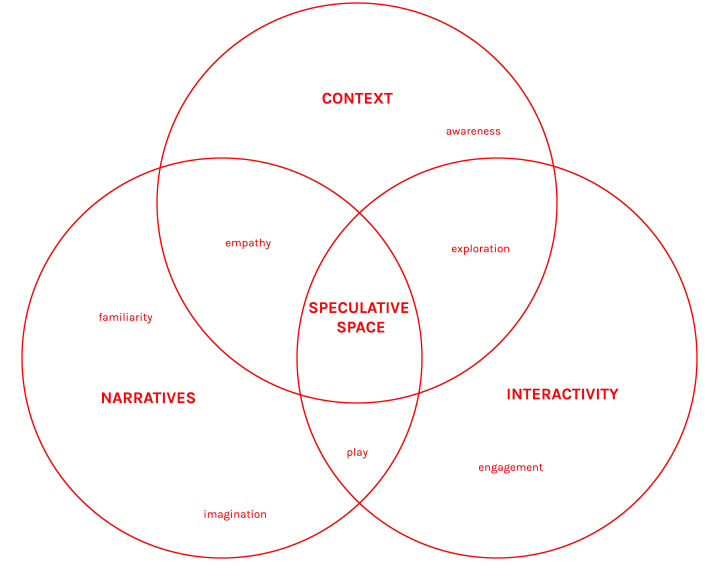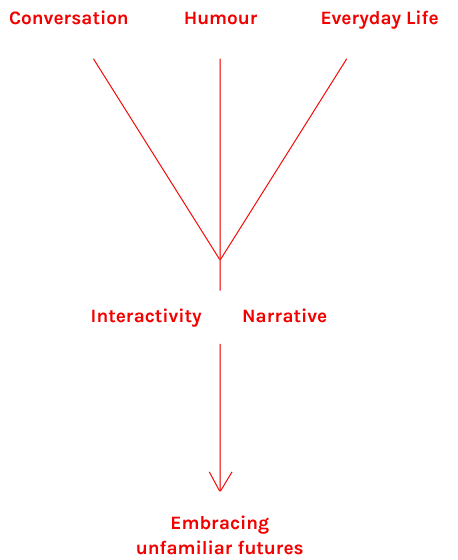THE TALES OF THE
DIGITAL ENTITIES

Hello human, let me tell you what this space is about.
The Tales of the Digital Entities explores how common perceptions of A.I.* in public discourse can be challenged through speculative interactive narratives. Through this project, audiences are able to experience novel interpretations of current and near-future relationships between humans and A.I that are informed by actual material limitations and possibilities of existing and emerging digital technologies. Three playful conversation-based stories unfold through experimental interfaces that give audiences experiences of fictional worlds where humans and A.I co-exist. Through this, the project aims to spark imaginative ideas and to provide contextual awareness of A.I.
* Artificial Intelligence is a field of science and practices with technology that aims to undertake cognitive activities with computation in order to work and react like humans.

Relationships with A.I
See the graph below for examples of future relationships that can be explored through narratives to predict potential future between human and A.I.
Visualising Future Conversations

Scenarios
RELATIONSHIPS, PLEASURE, DECEPTION

EMOTIONS, JUDGEMENT, PERSUASION, MISCOMMUNICATION


for guiding me through the design process through honours this year!>
